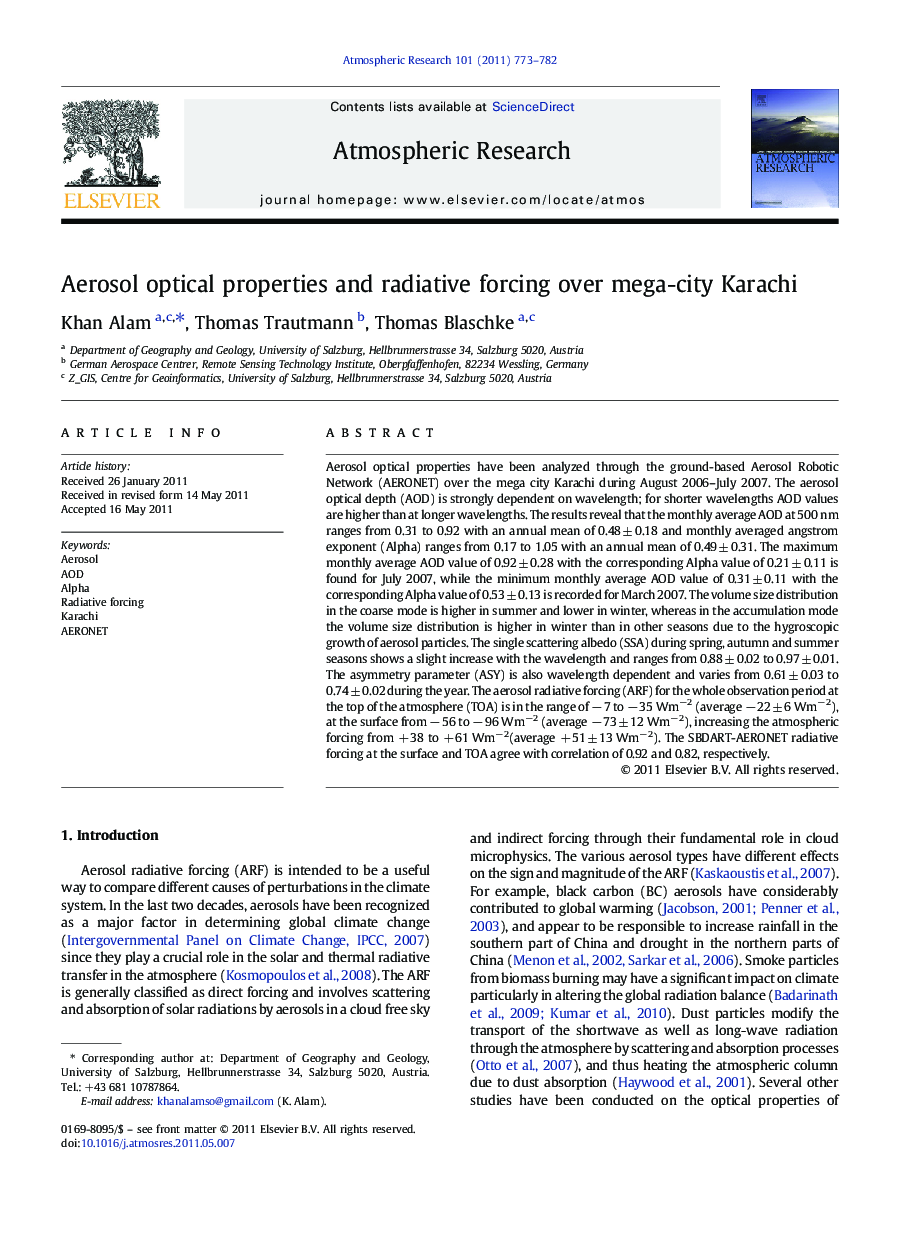| Article ID | Journal | Published Year | Pages | File Type |
|---|---|---|---|---|
| 4450352 | Atmospheric Research | 2011 | 10 Pages |
Aerosol optical properties have been analyzed through the ground-based Aerosol Robotic Network (AERONET) over the mega city Karachi during August 2006–July 2007. The aerosol optical depth (AOD) is strongly dependent on wavelength; for shorter wavelengths AOD values are higher than at longer wavelengths. The results reveal that the monthly average AOD at 500 nm ranges from 0.31 to 0.92 with an annual mean of 0.48 ± 0.18 and monthly averaged angstrom exponent (Alpha) ranges from 0.17 to 1.05 with an annual mean of 0.49 ± 0.31. The maximum monthly average AOD value of 0.92 ± 0.28 with the corresponding Alpha value of 0.21 ± 0.11 is found for July 2007, while the minimum monthly average AOD value of 0.31 ± 0.11 with the corresponding Alpha value of 0.53 ± 0.13 is recorded for March 2007. The volume size distribution in the coarse mode is higher in summer and lower in winter, whereas in the accumulation mode the volume size distribution is higher in winter than in other seasons due to the hygroscopic growth of aerosol particles. The single scattering albedo (SSA) during spring, autumn and summer seasons shows a slight increase with the wavelength and ranges from 0.88 ± 0.02 to 0.97 ± 0.01. The asymmetry parameter (ASY) is also wavelength dependent and varies from 0.61 ± 0.03 to 0.74 ± 0.02 during the year. The aerosol radiative forcing (ARF) for the whole observation period at the top of the atmosphere (TOA) is in the range of − 7 to − 35 Wm−2 (average − 22 ± 6 Wm−2), at the surface from − 56 to − 96 Wm−2 (average − 73 ± 12 Wm−2), increasing the atmospheric forcing from + 38 to + 61 Wm−2(average + 51 ± 13 Wm−2). The SBDART-AERONET radiative forcing at the surface and TOA agree with correlation of 0.92 and 0.82, respectively.
► The aerosol volume size distribution (V) in the coarse mode is higher in summer. ► Due to hygroscopic growth of aerosols, V in the accumulation mode is higher in winter. ► The single scattering albedo values vary in the range of 0.88–0.97 throughout the year. ► The average aerosol radiative forcing (ARF) at the top of atmosphere is − 22 ± 6 Wm−2.► The average ARF at the surface and within the atmosphere are − 73 ± 12 Wm−2 and + 51 ± 13 Wm−2.
